Just Imagine A World Full Of Beautiful Stained Glass Windows Which Also Generate Electricity…






Just imagine a world full of beautiful stained glass windows which also generate electricity…
[Oxford Photovoltaics]
More Posts from Possiblyfromorion and Others





The Human Microbiome Reimagined as a Cut-Paper Coral Reef by Rogan Brown

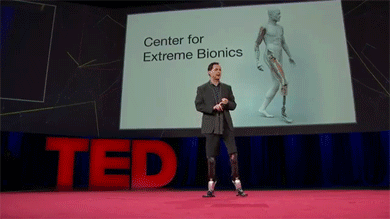
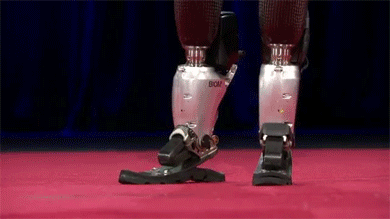

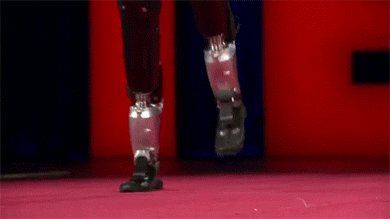

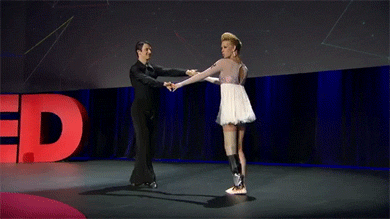
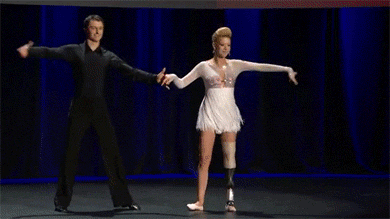
Hugh Herr: The new bionics that let us run, climb and dance
The most iconic cats snaps of 2018





















What are you distracting yourself from?
“If you do not know how to take care of yourself, and the violence in you, then you will not be able to take care of others. You must have love and patience before you can truly listen to your partner or child. If you are irritated you cannot listen. You have to know how to breath mindfully, embrace your irritation and transform it. Offer ONLY understand and compassion to your partner or child - This is the true practice of love.”
—
Thich Nhat Hanh
ENFP Fictional Tropes
Most ENFP characters fall under at least one trope. There are many cross overs in tropes and some ENFPs may not fit the categories presented. However, these tropes do loosely address the roles ENFP characters play in narratives.
The Idealist
These ENFPs see the very best in everyone they meet. They are often the person who will forgive and help the most villainous of characters. They often bring out the best in others by just being themselves. They don’t even need to actively help others, but inspire others with their dreams and ideals. Their enthusiasm brought on by their Ne is often enough. Combined with their Fi caring towards individuals makes the caring on top of it. The idealist ENFPs are usually the most optimistic characters you will find.

Examples: Kenneth Parnell (30 Rock), Antoine Triplett (Agents of S.H.I.E.L.D.), Mad Hatter (Disney’s Alice in Wonderland), Tara Maclay (Buffy: The Vampire Slayer), Eleventh Doctor (Doctor Who), Buddy the Elf (Elf), Nemo (Finding Nemo), Barry Allen (The Flash), Olaf (Frozen), Kiki (Kiki’s Delivery Service), Ariel (The Little Mermaid), Moana (Moana), Naruto Uzumaki (Naruto Shippuden), Henry Mills (Once Upon a Time), Capheus (Sense8), Joyce Byers (Stranger Things), Rapunzel (Tangled), Jessie (Toy Story), Kimmy Schmidt (Unbreakable Kimmy Schmidt), Ottoki Otoya (Uta No Prince Sama), and Tara Chambler (The Walking Dead).
The Activist
The Activist ENFP is often first struck with Ne curiosity in the world and the ideas within it and then as they shape their Fi they rally behind a certain cause. The ENFP Activist is passionate about their cause. They may break the rules of society and systems, but they will never turn against their individual cause. Just like the Idealist, the ENFP activist often inspires others, however, they inspire those to follow them. ENFP activists can be very persuasive, living their life in line with their beliefs.

Examples: Hayley Smith (American Dad), Aang (Avatar: The Last Airbender), Karen Page (Netflix’s Daredevil), Marshall Eriksen (How I met Your Mother), Cindy Lou Who (Ron Howard’s How the Grinch Stole Christmas), Helen Parr (The Incredibles), Ray Palmer/Atom (DCTVU), Erik Lensherr/Magneto (Marvel Comics and X-MenCU), Mike Wheeler (Stranger Things), Sir Thomas More (The Tudors), Sam Seaborn (The West Wing), and Judy Hopps (Zootopia).
The Salesman
This ENFP character can convince you of anything and sell you on their vision. Whether they are healthy or not, their Ne makes them idea people that inspire, their Fi helps them appeal to people and their individual sense of self. They make you think that they can help make all your dreams come true. Healthy or unhealthy, their Te can help them make you think their idea is your priority, like they have your interests at heart (combined with Fi). This can help them actually help you or help them completely swindle you. No matter what they will make you for at least a moment feel special as they take you on a romantic journey of your dreams.

Examples: Katherine Pierce (The Vampire Diaries), Genie (Aladdin), Walt Disney (Saving Mr. Banks), Randy Marsh (South Park), Tom Haverford (Parks & Recreation), Erlich (Silicon Valley), Taco (The League), Tiffany Doggett (Orange is the New Black), Michael Scott (NBC’s The Office), Christian (Moulin Rouge!), John Hammond (Jurassic Park), Thomas Jefferson (Hamilton: An American Musical), Bumi (Avatar: The Legend of Korra), Gob Bluth (Arrested Development), and Malcolm Merlyn (Arrow).
The Prince
This is the darker side of the ENFP. They are probably the most self-involved trope. They believe their their wants are the needs of others. They demand others to serve their personal priorities. They often don’t see their work as selfish, but part of a greater cause or purpose. However, they are usually looping ENFPs. Many Prince ENFPs find themselves in leadership positions because they are over using their tertiary Te that they think is morally just because of their minimal use of their secondary Fi function. They use Te objectivity as a shield against their own subjective motives of Fi-Si. These types often have potential to be more positive tropes, but have faltered in their quest to satisfy their inferior function fears and desires.

Examples: Ice King (Adventure Time), Malcolm Merlyn (Arrow), Cheryl Tunt (Archer), The Master (Doctor Who-10th Doctor Era), King Richard, Jaime Lannister (Game of Thrones), Ronald Weasley (Harry Potter Series), Sean McGinnes (Hell on Wheels), Willis ‘Diamondback’ Stryker (Luke Cage), Julia (Syfy’s The Magicians), Erik Lensherr/Magneto (Marvel Comics/X-Men Cinematic Universe), Obito Uchiha (Naruto Shippuden), Peter Pan (Once Upon a Time), Marshal D. Teach “Blackbeard” (One Piece), Klaus Mikaelson (The Vampire Diaries/The Originals), and Catherine Earnshaw (Wuthering Heights).
The Champion Leader
ENFP leaders become so in their hope to help others. They are concerned with the forgotten because of their Introverted Feeling. They are a champion of a cause like the activist, but find themselves leading others in order to accomplish their goals. Their leadership style isn’t one of intense organization, but of individuality and independence. They are often because of Ne-Fi on the ground doing tasks with their followers in order to accomplish group goals. They have a hard time delegating, standing back and letting only others enjoy the fun of the action. This is due to their Ne being more present oriented and Fi being a function that can’t be used conceptually, but perceptually. The ENFP leader is far more comfortable helping others in the situation rather than apart from it.

Examples: Clark Kent/Superman (DC), Renly Baratheon (Game of Thrones), Chris (Bravest Warriors), Peter Quill (Guardians of the Galaxy), King Arthur (Mists of Avalon), Moana (Moana), Hashirama Senju (Naruto Shippuden), Peter Pan (Disney’s Peter Pan), Monkey D. Luffy (One Piece), Dr. Alexander Sweet (Penny Dreadful), Erik Lensherr/Magneto (Marvel/X-Men Cinematic Universe), and Captain Kirk (Star Trek).
The Goof
This is the most under-estimated ENFP character. They come off is aloof, odd, and carefree on the surface. But this is often a misread. The ENFP goof is often wandering the unbeaten Ne dominance path, seeing things differently in ways that other types can’t accept or don’t understand. Their sense of genius is mistaken for oddity. They usually surprise others with their intelligence and success, because it is never how others would go about completing a given task or goal. Their genius word play is often seen as simply humorous rather than an indicator of a deeper intelligence.

Examples: Mabel Pines (Gravity Falls), Second Doctor & Eleventh Doctor (Doctor Who), Troy Barnes (Community), Fez (That ‘70s Show), Gregory (Over the Garden Wall), Spongebob Squarepants (Spondgebob Squarepants), Bing Bong (Inside Out), Hugo ‘Hurley’ Reyes (LOST), Bert (Morry Poppins), Mei (My Neighbor Totoro), Winston Bishop (New Girl), Erin Hannon (NBC’s The Office), Russell (Up), Lorelai Gilmore (Gilmore Girls), Madam Mim (The Sword in the Stone), Gene Belcher (Bob’s Burgers), Scooby-Doo (Scooby-Doo, Where Are You?), Peter Quill (Guardians of the Galaxy), and Bolin (Avatar: The Legend of Korra).
youtube.com/watch?v=tc-jMrxgPsw&t=47s
Just trying to get a drink of water



“Be careful when you fight the monsters, lest you become one.” – Friedrich Nietzsche
-
 wisemanslayn liked this · 2 weeks ago
wisemanslayn liked this · 2 weeks ago -
 avenarts liked this · 2 weeks ago
avenarts liked this · 2 weeks ago -
 pleaseuneedone liked this · 2 weeks ago
pleaseuneedone liked this · 2 weeks ago -
 chainsawctopus liked this · 2 weeks ago
chainsawctopus liked this · 2 weeks ago -
 cricket-mantis liked this · 2 weeks ago
cricket-mantis liked this · 2 weeks ago -
 celestial-shark reblogged this · 2 weeks ago
celestial-shark reblogged this · 2 weeks ago -
 amalgamcorps liked this · 2 weeks ago
amalgamcorps liked this · 2 weeks ago -
 ferallemonthing liked this · 2 weeks ago
ferallemonthing liked this · 2 weeks ago -
 umm0lly reblogged this · 2 weeks ago
umm0lly reblogged this · 2 weeks ago -
 nothin65 liked this · 2 weeks ago
nothin65 liked this · 2 weeks ago -
 pyriterocks reblogged this · 2 weeks ago
pyriterocks reblogged this · 2 weeks ago -
 romulousofatlantis reblogged this · 2 weeks ago
romulousofatlantis reblogged this · 2 weeks ago -
 tweblo liked this · 2 weeks ago
tweblo liked this · 2 weeks ago -
 wolfy959-reblog reblogged this · 2 weeks ago
wolfy959-reblog reblogged this · 2 weeks ago -
 itseightamineedsleep liked this · 2 weeks ago
itseightamineedsleep liked this · 2 weeks ago -
 fourteen-crayons reblogged this · 2 weeks ago
fourteen-crayons reblogged this · 2 weeks ago -
 elli-mk reblogged this · 2 weeks ago
elli-mk reblogged this · 2 weeks ago -
 2nullpunkt liked this · 2 weeks ago
2nullpunkt liked this · 2 weeks ago -
 bluewizard1 liked this · 2 weeks ago
bluewizard1 liked this · 2 weeks ago -
 twixy-furry reblogged this · 2 weeks ago
twixy-furry reblogged this · 2 weeks ago -
 twixy-furry liked this · 2 weeks ago
twixy-furry liked this · 2 weeks ago -
 lobsterindenial liked this · 2 weeks ago
lobsterindenial liked this · 2 weeks ago -
 jesterpanic liked this · 2 weeks ago
jesterpanic liked this · 2 weeks ago -
 chemicallygoth liked this · 2 weeks ago
chemicallygoth liked this · 2 weeks ago -
 blondeandfivefeeteven reblogged this · 2 weeks ago
blondeandfivefeeteven reblogged this · 2 weeks ago -
 blondeandfivefeeteven liked this · 2 weeks ago
blondeandfivefeeteven liked this · 2 weeks ago -
 thehannahcosmic liked this · 2 weeks ago
thehannahcosmic liked this · 2 weeks ago -
 tanileaf reblogged this · 2 weeks ago
tanileaf reblogged this · 2 weeks ago -
 mojojax2500 reblogged this · 2 weeks ago
mojojax2500 reblogged this · 2 weeks ago -
 bewwy reblogged this · 2 weeks ago
bewwy reblogged this · 2 weeks ago -
 moonlightglory reblogged this · 2 weeks ago
moonlightglory reblogged this · 2 weeks ago -
 moonlightglory liked this · 2 weeks ago
moonlightglory liked this · 2 weeks ago -
 waining-crescent-moon liked this · 2 weeks ago
waining-crescent-moon liked this · 2 weeks ago -
 roxfox5 reblogged this · 2 weeks ago
roxfox5 reblogged this · 2 weeks ago -
 roxfox5 liked this · 2 weeks ago
roxfox5 liked this · 2 weeks ago -
 yanci-indigo liked this · 2 weeks ago
yanci-indigo liked this · 2 weeks ago -
 submasfan reblogged this · 2 weeks ago
submasfan reblogged this · 2 weeks ago -
 submasfan liked this · 2 weeks ago
submasfan liked this · 2 weeks ago -
 phanerozoicfossilgardener reblogged this · 2 weeks ago
phanerozoicfossilgardener reblogged this · 2 weeks ago -
 starcrossedwires liked this · 2 weeks ago
starcrossedwires liked this · 2 weeks ago -
 the-splaaash-o7 reblogged this · 2 weeks ago
the-splaaash-o7 reblogged this · 2 weeks ago -
 genevawrenn reblogged this · 2 weeks ago
genevawrenn reblogged this · 2 weeks ago -
 genevawrenn liked this · 2 weeks ago
genevawrenn liked this · 2 weeks ago -
 kittylover-119 liked this · 2 weeks ago
kittylover-119 liked this · 2 weeks ago -
 little-opossum liked this · 2 weeks ago
little-opossum liked this · 2 weeks ago -
 arcaedex reblogged this · 2 weeks ago
arcaedex reblogged this · 2 weeks ago -
 peryshki liked this · 2 weeks ago
peryshki liked this · 2 weeks ago -
 letsdoublethetrouble liked this · 2 weeks ago
letsdoublethetrouble liked this · 2 weeks ago -
 y0rr0y liked this · 2 weeks ago
y0rr0y liked this · 2 weeks ago -
 me3psmp4 liked this · 2 weeks ago
me3psmp4 liked this · 2 weeks ago
